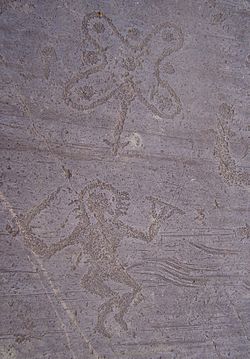
Back Camunni Breton Camuns Catalan Kamunové Czech Camunni German Καμούνοι Greek Camunni Spanish Camunni French Camuni Italian Camunni Latin Camunni LMO

The Camuni or Camunni were an ancient population located in Val Camonica during the Iron Age (1st millennium BC); the Latin name Camunni was attributed to them by the authors of the 1st century. They are also called ancient Camuni, to distinguish them from the current inhabitants of the valley (the Camuni or Camunians). The Camunni were among the greatest producers of rock art in Europe; their name is linked to the famous rock engravings of Valcamonica.
A people of obscure origin, they lived in a region, the Val Camonica, that had already been the site of a cultural tradition dating back to the early Neolithic. The Camunni are mentioned by classical historiographical sources from the 1st century BC, corresponding to the Iron Age in Val Camonica (from the 12th century BC until about Romanization). In ancient Greek, Strabo referred to them as Καμοῦνοι (Kamounoi), while Cassius Dio called them Καμούννιοι (Kamounnioi).
Conquered by Rome at the beginning of the 1st century AD, the Camunni were gradually incorporated into the political and social structures of the Roman Empire as a self-governing polity called the Res Publica Camunnorum. They were granted Roman citizenship from the second half of the 1st century, with a rapid process of Latinization.
© MMXXIII Rich X Search. We shall prevail. All rights reserved. Rich X Search